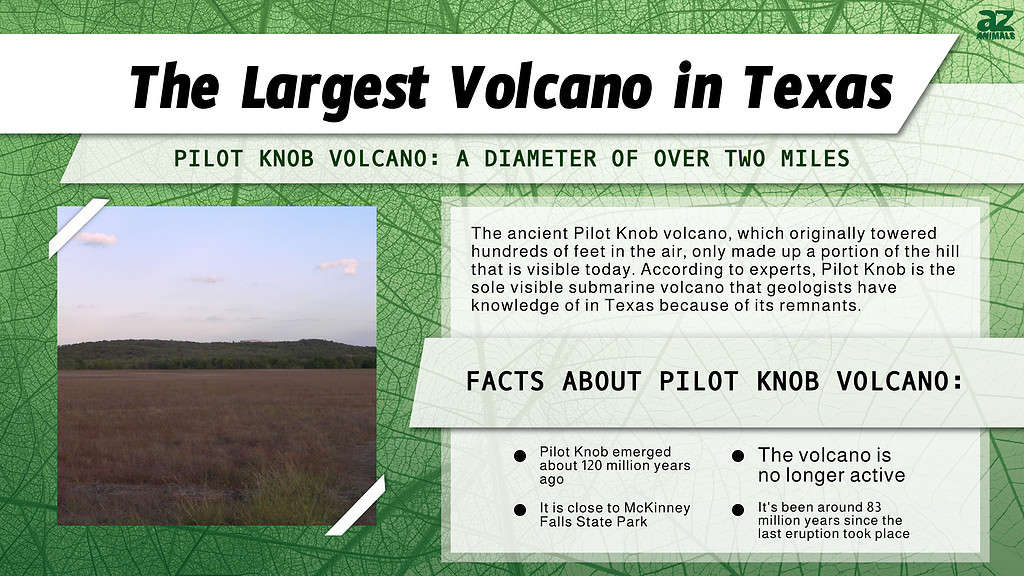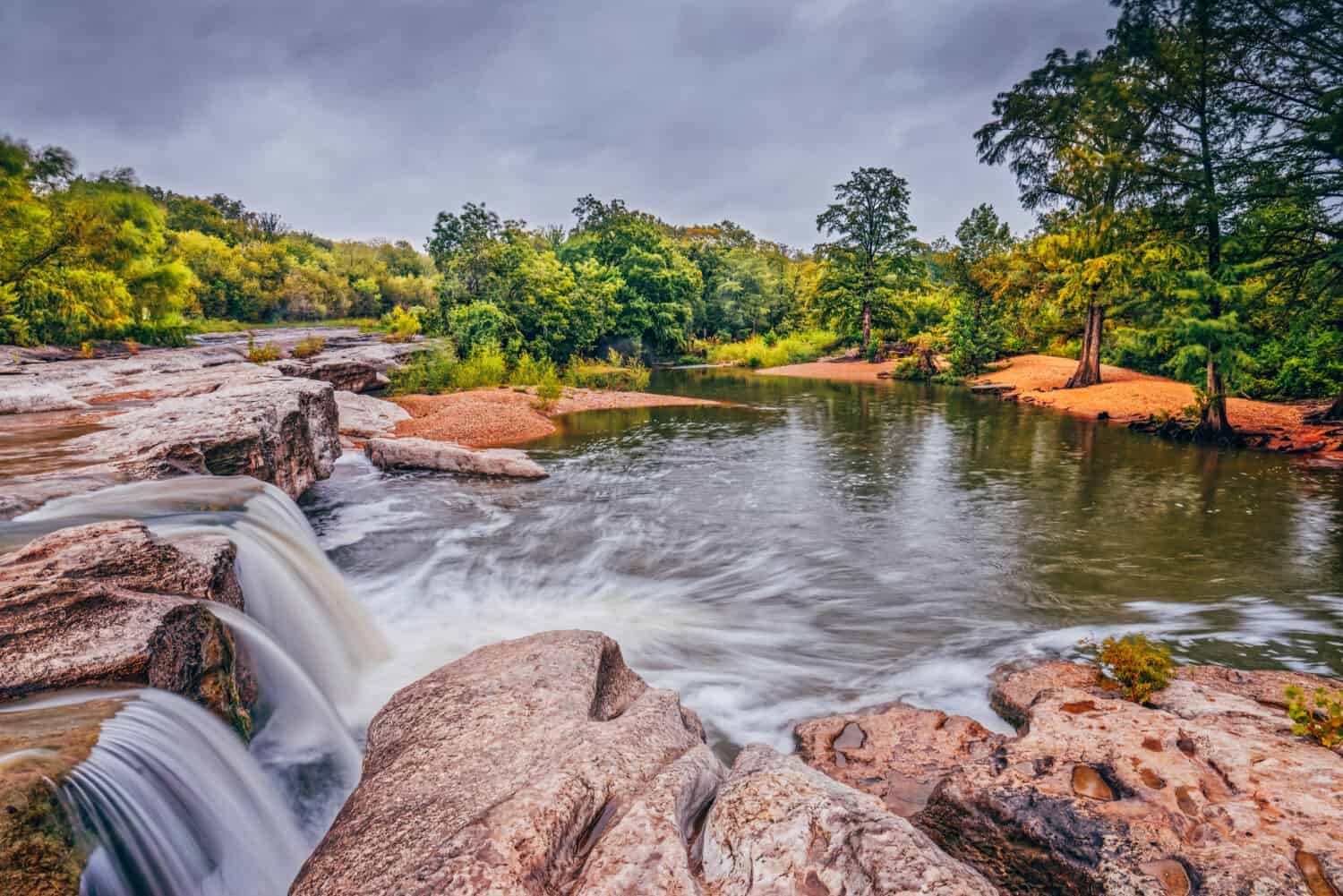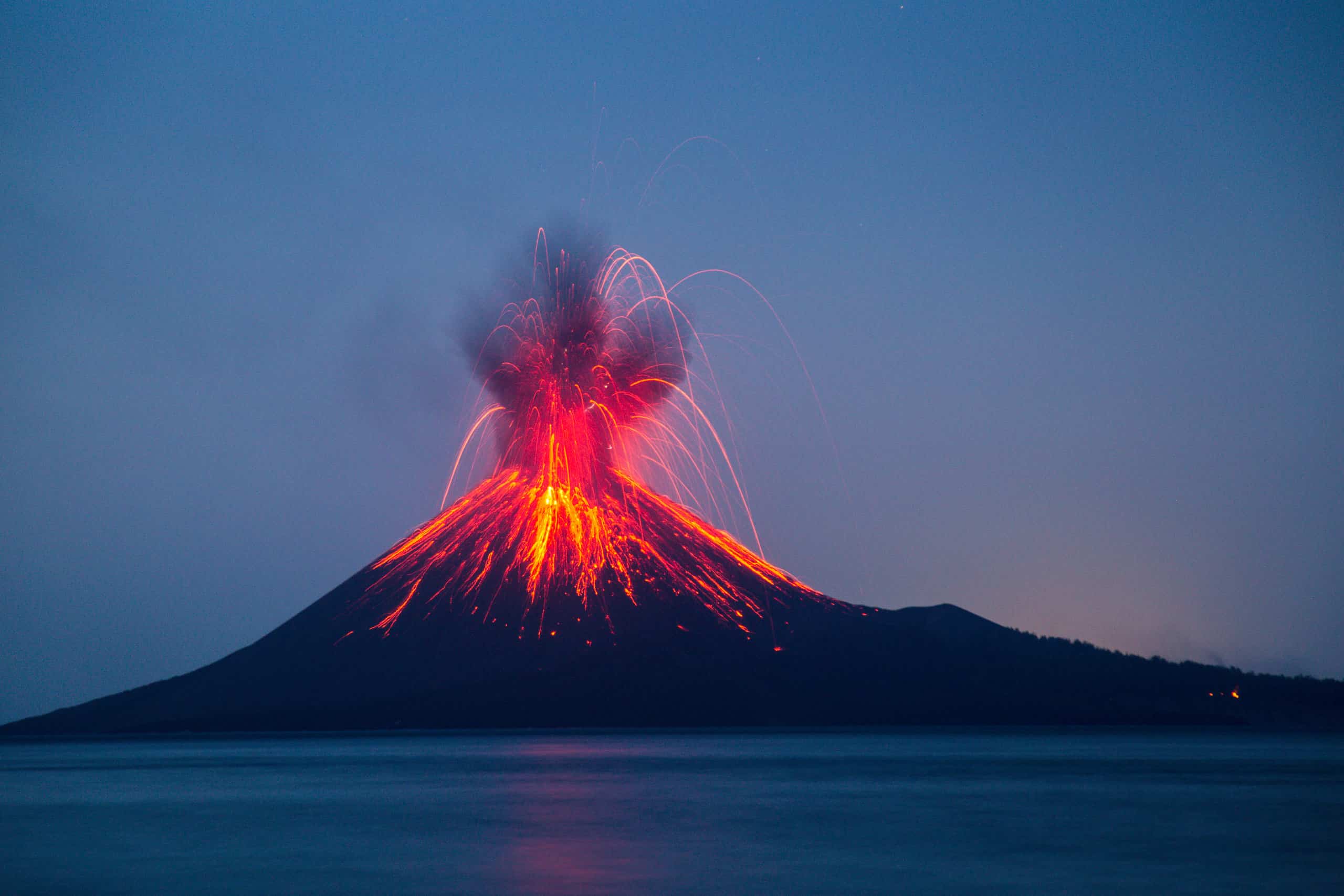The continental United States has an enormous volcano that few people know exists. Texas has a volcano located right in the city of Austin! The now-extinct volcano once went by the name Pilot Knob. Despite being dormant for millions of years, is nevertheless a sight to behold.
Its lava flow’s remnants are still visible, and its impacts on the soil in the region remain visible to this day. It only has the appearance of a tiny hill that you would hardly even notice. With a diameter of over two miles, the substance underlying it consists of volcanic igneous rock, the biggest of 75 volcanoes to have been active in the Lone Star State.
Where Is Pilot Knob Located?

The Colorado River flows through Austin.
©iStock.com/RoschetzkyIstockPhoto
Eight miles south of the city’s center in Austin, TX, and close to McKinney Falls State Park sits Pilot Knob. Dee Gabriel Collins keeps near the slope of Cretaceous beach rock that forms the volcano’s northern topographic rim.
To the south of Dee Gabriel Collins, the center core area produced by the refractory trap rock can be seen. The lowland area drains into Cottonmouth Creek and has supple, readily eroding volcanic ash and other pyroclastic formations.
South Pilot Knob’s trap rock protrudes down the road about 0.3 miles east of the point where Bluff Springs Road and McKinney Falls Parkway meet.

The Creation of Pilot Knob

Dinosaurs flourished near Pilot Knob.
©AmeliAU/Shutterstock.com
The region where the city of Austin now stands was blanketed by shallow waters and aquatic life that was abundant, in a tropical environment, back when Pilot Knob was an active volcano. Volcanic eruptions could also cause earthquakes in the area.
The ancient Pilot Knob volcano, which originally towered hundreds of feet in the air, only made up a portion of the hill that is visible today. According to experts, Pilot Knob is the sole visible submarine volcano that geologists have knowledge of in Texas because of its remnants.
Central Texas was an element of a huge marine shelf in the late Cretaceous period, where carbonate rocks were produced, and the area gradually dried up as sediments were formed. When magma reached the surface and came into contact with water-rich, unconsolidated sediments, the water quickly turned into steam, causing a massive explosion that left an explosion crater.
This is how volcanoes are produced. As additional magma came into contact with additional water trapped in the volcanic ash, Pilot Knob began to experience violent eruptions. Over time, an ash cone formed on top of the blast crater.
It has been around 83 million years since the last eruption took place at Pilot Knob.
History of the Pilot Knob Volcano

Pilot Knob emerged around 120 million years ago.
About 120 million years ago, at a time of volcanic activity throughout the Cretaceous Age, Pilot Knob emerged. The modern Texas farmer benefited from the volcanic rock as well. The land around the volcano has benefited from the material that resulted from its explosions.
Legend has it that local inhabitants would see the “knob” of the hilltop for miles in every direction. Because of this, the knob became a common location marker. This is also how the now-extinct volcano got its name.
Pilot Knob hasn’t been a source of concern for a long time, despite the fact that it currently looks over some nearby residences and developments. The volcano is no longer active and is unlikely to ever be in the future hence it has been classified as extinct rather than dormant. However, not many people get the chance to witness a place in Texas that formerly saw such dramatic activity.
As Seen on TV
On the television program 911 Lone Star, the South Austin behemoth was brought back to life. Thanks to the show’s creators, Austin wasn’t a modern-day Pompeii. Although the eruption in the episode is undoubtedly dramatic for television, McKinney Falls State Park has relics of the actual eruption. Many visitors are unaware of the region’s extensive history.
Flora and Fauna near Pilot Knob

Onion Creek is part of McKinney Falls State Park.
©Silvio Ligutti/Shutterstock.com
The region near Pilot Knob offers hiking, camping, angling, cycling, and picnics in addition to modest yet beautiful waterfalls that flow into quiet pools for wading in Onion Creek. It also has “Old Baldy,” a cypress tree that has been around for 500 years. It is among the oldest bald cypress trees on public property in the Lone Star State.
There are many possibilities to observe animals in this region of Texas. You can see armadillos, rock squirrels, rabbits, deer, foxes, ducks, and a number of other bird species in the vicinity.
Bass, catfish, and perch are among the fish species flourishing in Onion Creek. Visitors can check out small frogs the size of a dime if they have a keen eye. Less than three miles separate McKinney Falls State Park from Pilot Knob, which you’ll find on the southeast side of Austin.
Visitors in the surrounding major city can spend an afternoon exploring the park’s Texas limestone trails, gushing waters, wildlife, and classic hill country natural splendor. Nearly 700 acres of stunning Texas hill country scenery make up McKinney Falls State Park, which is only a short drive from Austin’s central business district.
Thank you for reading! Have some feedback for us? Contact the AZ Animals editorial team.








